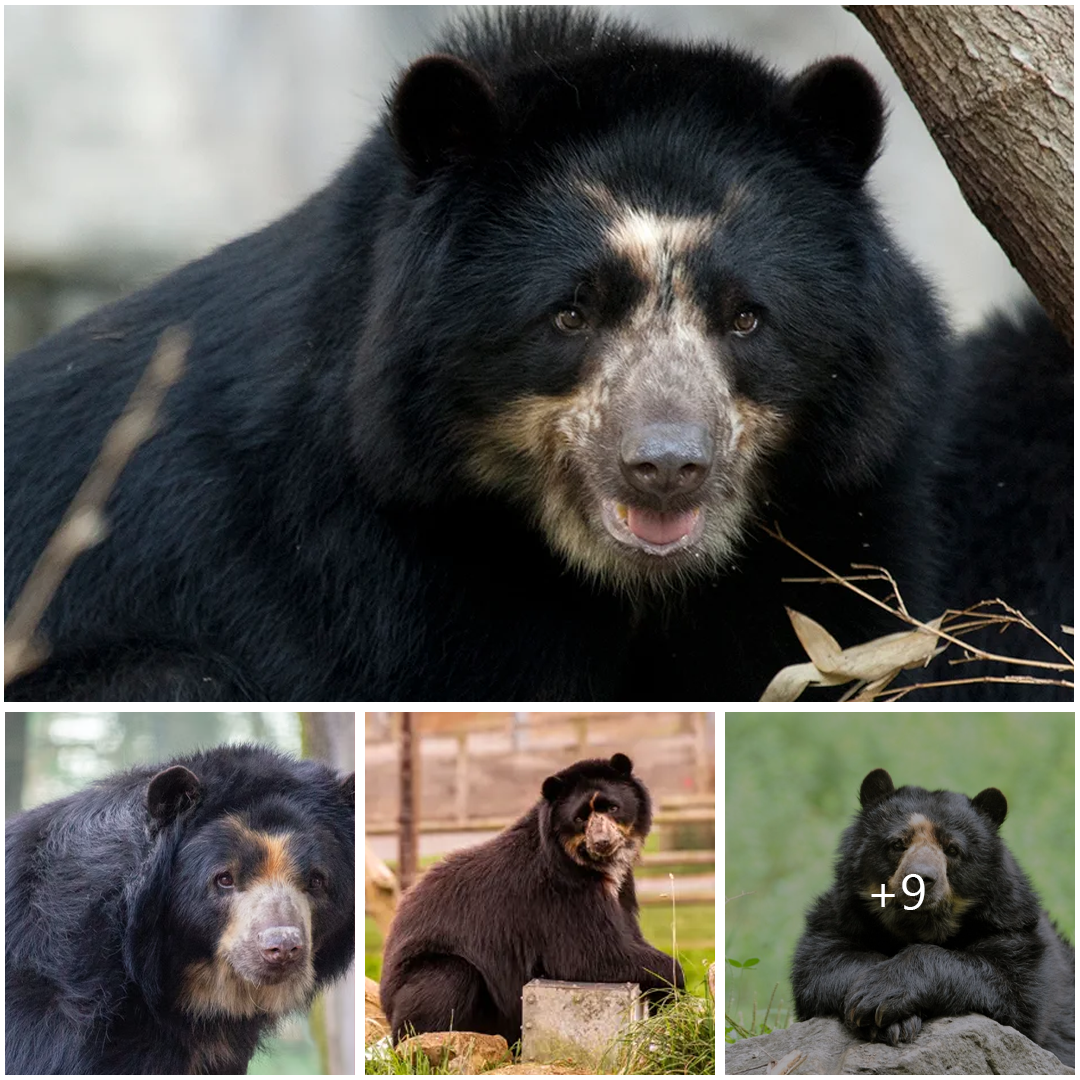
Exploring the Andean Bear: South America’s Enigmatic Spectacled Bear
Introduction: The Andean bear, also known as the spectacled bear (Tremarctos ornatus), is a captivating species native to the Andes Mountains of South America. With its unique appearance and fascinating behaviors, the Andean bear has long intrigued scientists and nature enthusiasts alike. In this article, we will delve into the world of the Andean bear, exploring its physical characteristics, habitat, behavior, diet, reproduction, conservation status, and the challenges it faces in the wild.
Physical Characteristics: The Andean bear is characterized by its distinctive markings, which resemble spectacles or “eyeglasses” around its eyes, giving rise to its alternative name, the spectacled bear. These markings vary in shape and color, ranging from beige to white, and are unique to each individual bear. Their fur is typically black or dark brown, and they have a sturdy build with strong limbs adapted for climbing trees and traversing rugged terrain. Adult Andean bears can weigh between 100 to 200 kilograms (220 to 440 pounds) and measure around 1.2 to 1.8 meters (4 to 6 feet) in length.
Habitat: Andean bears are primarily found in the cloud forests, montane forests, and páramo grasslands of the Andes Mountains, ranging from Venezuela in the north to Bolivia in the south. These bears are highly adaptable and can inhabit a variety of ecosystems, including dense forests, scrublands, and even agricultural areas near human settlements. However, deforestation and habitat fragmentation pose significant threats to their survival, limiting their range and access to suitable habitat.
Behavior: Andean bears are solitary animals, except during the mating season or when females are accompanied by cubs. They are primarily nocturnal and crepuscular, meaning they are most active during the early morning and late afternoon hours. These bears are excellent climbers and spend much of their time in trees, foraging for food or seeking refuge from predators. They have a diverse diet that includes fruits, berries, leaves, insects, small mammals, and occasionally carrion.
Reproduction: Female Andean bears typically give birth to one or two cubs after a gestation period of around six to seven months. Cubs are born blind, helpless, and covered in fine fur, and they remain dependent on their mother for the first year of their lives. Female Andean bears are protective of their cubs and will fiercely defend them against potential threats.
Conservation Status: The Andean bear is classified as vulnerable by the International Union for Conservation of Nature (IUCN), with habitat loss, poaching, and human-wildlife conflict among the primary threats to its survival. Conservation efforts aimed at protecting Andean bear habitat, mitigating human-bear conflicts, and raising awareness about the importance of coexistence are crucial for the long-term survival of this iconic species.
Conclusion: The Andean bear, with its enigmatic charm and adaptability, plays a vital role in maintaining the health and diversity of Andean ecosystems. By understanding and appreciating the unique characteristics and behaviors of the Andean bear, we can work together to ensure its continued survival in the wild.





